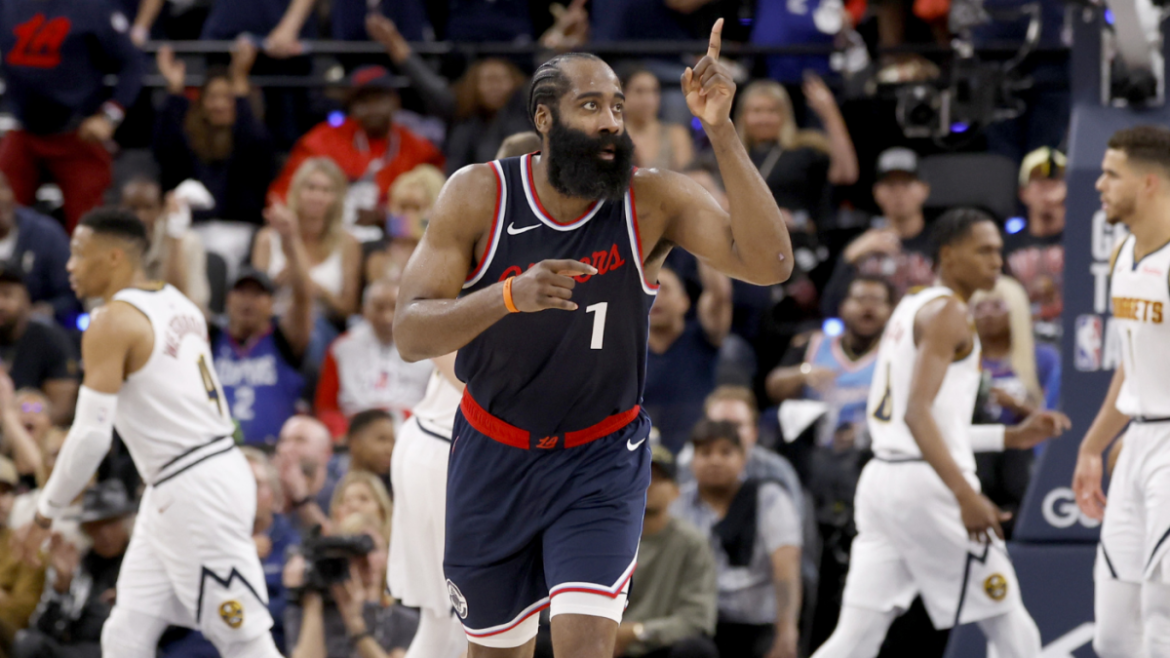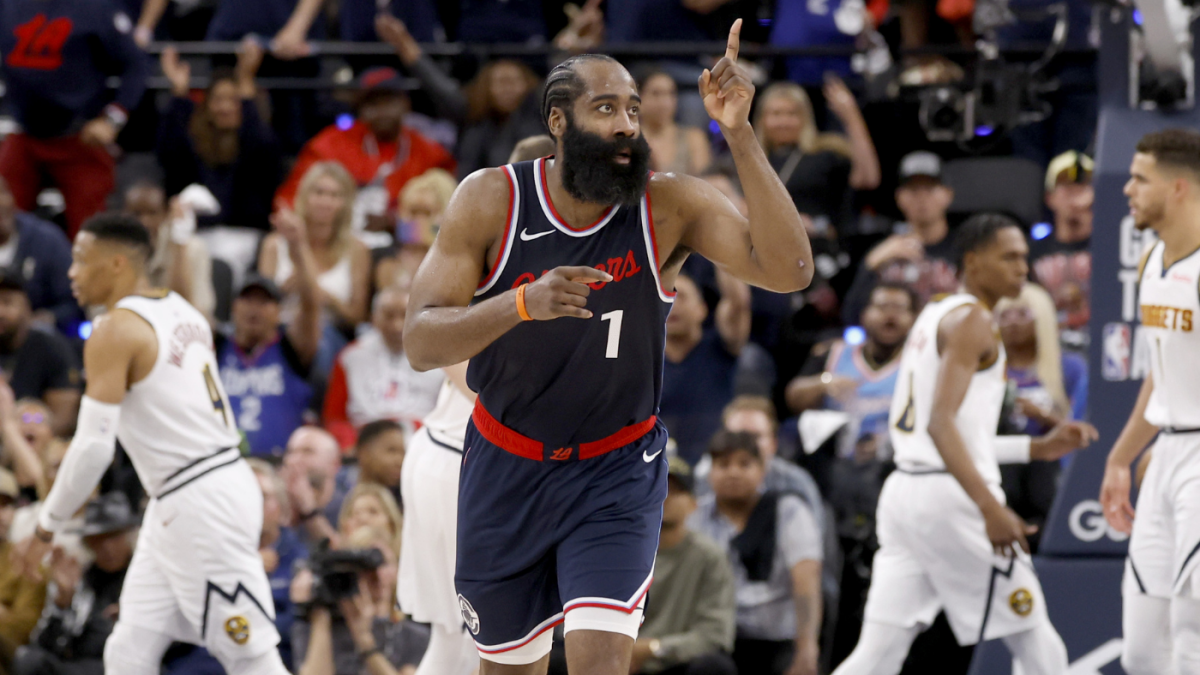James Harden’s recent decision to decline his player option and sign a new two-year, $81.5 million contract with the Los Angeles Clippers marks a pivotal moment in both his career and the franchise’s trajectory. This move underscores Harden’s enduring value as a premier player and the Clippers’ strategic vision for the future. The contract, which includes a player option for the second year, reflects a nuanced approach to financial management and roster construction, setting the stage for an intriguing chapter in the NBA.
Context: Harden’s Journey and Clippers’ Ambitions
James Harden, an 11-time NBA All-Star and former MVP, joined the Clippers in 2022 with the goal of elevating the team into championship contention. His arrival was met with high expectations, and while injuries and roster changes have posed challenges, Harden’s impact has been undeniable. The 2024-25 season saw Harden return to All-Star form, shouldering much of the offensive and playmaking responsibilities, particularly after Paul George’s mid-season departure and Kawhi Leonard’s recurring injuries. His performance rejuvenated the Clippers’ hopes and solidified his role as a cornerstone player.
Harden’s contract situation was a critical juncture. He had the option to earn $36.3 million via his player option for the 2025-26 season. However, declining that option and negotiating a new deal allowed for a contract structure that better aligned with both his aspirations and the Clippers’ long-term strategy. The new agreement provides Harden with a raise and greater control, while offering the Clippers financial flexibility amid a roster in transition.
Contract Details and Terms
The new contract is a two-year deal valued at $81.5 million, covering the 2025-26 and 2026-27 NBA seasons. This structure includes several key components:
– Duration: Two years, providing stability and a clear timeline for both Harden and the Clippers.
– Financials: Averaging about $40.75 million annually, this represents a significant increase over Harden’s prior player option contracts.
– Player Option: The second year of the deal includes a player option, partially guaranteed, giving Harden the autonomy to reassess his situation after the first season.
– Partial Guarantees: This clause offers flexibility, allowing adjustments based on health, performance, and market dynamics.
This deal is an upgrade from the two-year, $70 million extension Harden signed the previous offseason and reflects his continued ability to be a high-impact player despite his age. The contract’s structure also highlights the Clippers’ commitment to maintaining a competitive roster while managing financial constraints.
Implications for the Clippers
The Clippers’ decision to retain Harden on this lucrative contract signals their commitment to rebuilding a championship-contending lineup around him. With Paul George now moving to the 76ers and Kawhi Leonard’s future clouded by injuries, Harden’s role as the team’s focal point has become even more critical.
– Scoring and Playmaking Anchor: Harden remains central to the Clippers’ offense, capable of creating his own shot while distributing effectively to teammates.
– Leadership Role: Harden’s veteran presence provides leadership for younger players in a roster undergoing shifts.
– Cap Flexibility: Although the contract is substantial, the partial guarantees and player option give the Clippers some salary cap management leverage moving forward.
– Trade Considerations: The contract contains a trade kicker (15%), which could complicate future trades but reflects Harden’s value.
The Clippers’ ability to retain Harden underscores their strategic approach to roster construction. By securing a high-impact player like Harden, they position themselves to compete in the Western Conference, even as they navigate the challenges of a transitioning roster.
Harden’s Motivation and Career Trajectory
At nearly 36 years old, turning 37 in August, Harden’s decision to sign this contract underscores his confidence in continuing to perform at a high level. His All-NBA return this season suggests he still views himself as a top-tier player capable of competing for titles.
– Financial Security: The contract ensures substantial earnings while maintaining personal flexibility.
– Competitive Aspirations: As a player with championship ambitions, remaining in a competitive market like Los Angeles is strategic.
– Legacy: Harden’s career longevity and elite status as an 11-time All-Star amplify the significance of his ongoing contributions.
Harden’s decision to sign this contract reflects his desire to continue competing at the highest level while also securing his financial future. His performance this season has demonstrated that he remains a valuable asset, both on and off the court.
Broader NBA Context
Harden’s contract and decision resonate beyond just the Clippers. In an NBA environment where supermax deals, player movement, and cap strategy define team composition, Harden’s move highlights how veteran stars navigate financial and competitive realities.
– Star Retention: The Clippers’ ability to keep Harden emphasizes the importance of star retention over costly trades.
– Salary Cap Management: The partial guarantee and player option in Harden’s deal illustrate smart financial engineering to allow future roster adjustments.
– Market Dynamics: With few guaranteed max offers available, Harden leveraged his value effectively.
The NBA landscape is constantly evolving, and Harden’s contract serves as a case study in how players and teams can balance immediate success with long-term sustainability. His decision to sign with the Clippers reflects a strategic approach that benefits both parties.
Conclusion: Impact and Outlook
James Harden’s two-year, $81.5 million deal with the Clippers cements his place as a key figure in the NBA’s competitive and financial landscape. This contract balances personal security, competitive potential, and team flexibility. For the Clippers, it signals a willingness to build around Harden as a primary star amid roster changes and challenges.
Looking ahead, Harden’s ability to maintain his high-level performance and health will be crucial for both his legacy and the Clippers’ success. The player option in the second year serves as a strategic tool, potentially giving Harden the power to continue, renegotiate, or move on depending on circumstances.
The Clippers face a pivotal stage where their roster decisions, including how they complement Harden, will dictate their championship window. Harden’s new deal not only secures his future but also shapes the team’s trajectory as they navigate the evolving NBA landscape.
This saga encapsulates the complexities of modern NBA contracts, the balancing act of star power, and the relentless pursuit of success that drives player and franchise decisions alike. Harden’s decision to sign with the Clippers is a testament to his enduring value and the team’s commitment to competing at the highest level.





